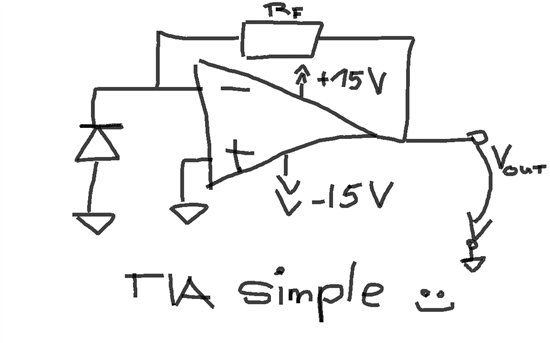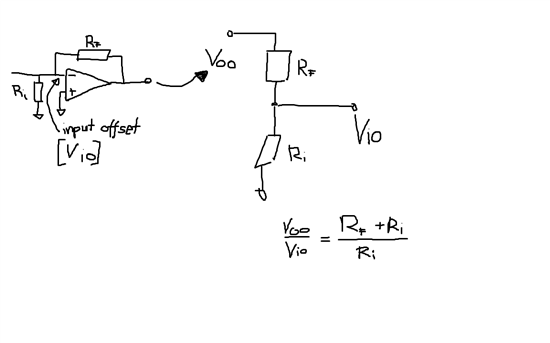I am doing some basic measurments with photodiode applications. I would say I am rather expirienced in this field, although I am lacking still some Basic knowledge.
My biggest Problem is that theoratical knowledge cannot be easily transfered into real life Solutions, as you all may have expirienced when working with actual PCBs and circuit designs.
To state a bit more i am familiar with Jerald Graemes Photodiode amplifier book, I read through 75% and did understand around 25 % :) Also i am familiar with Bob Pease, Paul Rako, Grohe , Tim Green, so you might see I am quite into OpAmps.
Now I want to start this thread so I can learn a lot and perhaps some others can Profit from this too.
My first question since I am actually trying this measurments right now on bredboard is concerning Input bias current and Input Offset voltage.
What I do not know: Is the Input Offset voltage also amplified through Feedback resistor Rf or not? Right now I would say it is not. Since I do not measure it at my amplified Output.
As I read the Input bias current really is present amplified at the Output, now I did measrue 2 different OpAmps, both dual channel, one is the good old JFET Input ( for low bias current ) TL062, the other one is the modern bipolar ( for low Offset voltage ) OPA2277 with a lot more bias current.
Now I do use different Feedback resistors, like 10k, 100k, 1M, I would suppose I get a different Output voltage each time in accordance to my bias current times Feedback resitance. But I do actually not measrue it.
Ouput voltage I do measure in DC with an modernreliable :) agilent multimeter, i can measrue to 0.001mV, although lets say it will measure 10µV stable, I would think I at least should measrue the 1Mohm bias current amplification, but I cannot see it yet.
So this is where theory and Praxis is striking me once more :)
To say on my Input I use a BPW21, that is a Si-Photodioe (so it can measure visible light ) with a really big active area ( around 580 pF capacitance ). Maybe this is also my Problem in the measruemtn, since this is a really big Input capacitance, hadnt time to evaluate this.
Both the OpAmps I supply with a linear power supply +- 15V, aha and now that I think of it, I do not use any blocking caps ( 100 nF), but honestly I do not expect any outcome changes if I would use them, since it is a linear power supply , but who ever knows...
So this is where I am so far, now I would like to hear from you, feel free to share your Points of view, I would prefer rather someone who actually works with it, in regard to solder iron and PCBs, than theoratical views, I do have a lot them :) and honestly the solder iron is my Spice, too :)
Best wishes,
seb



